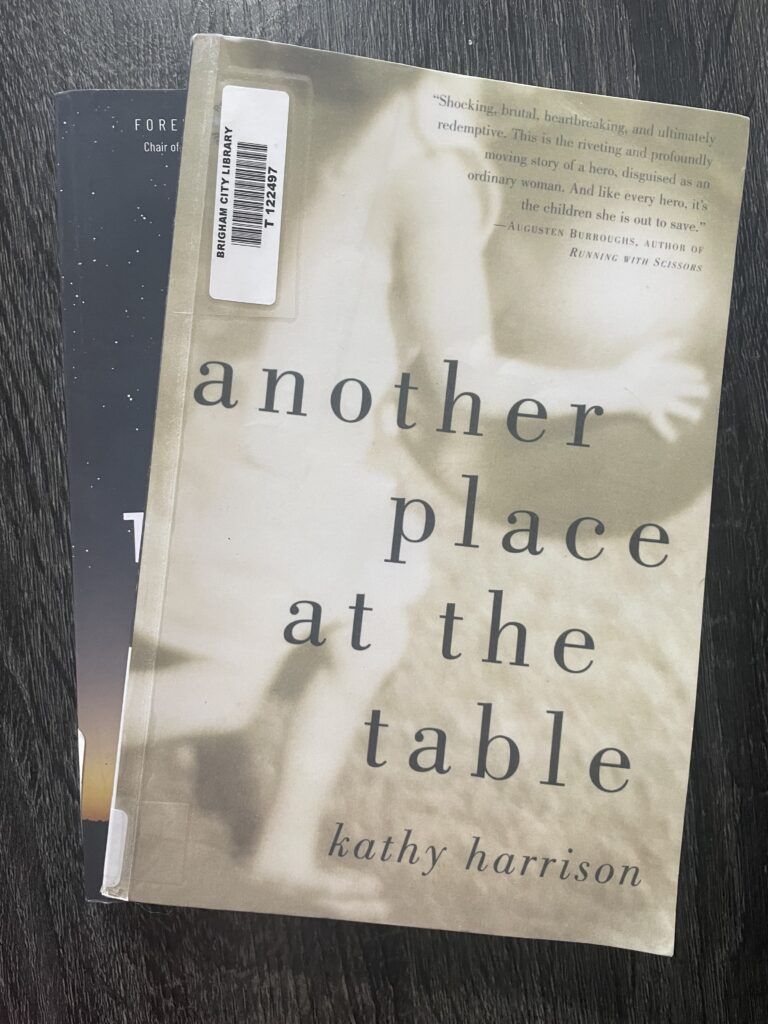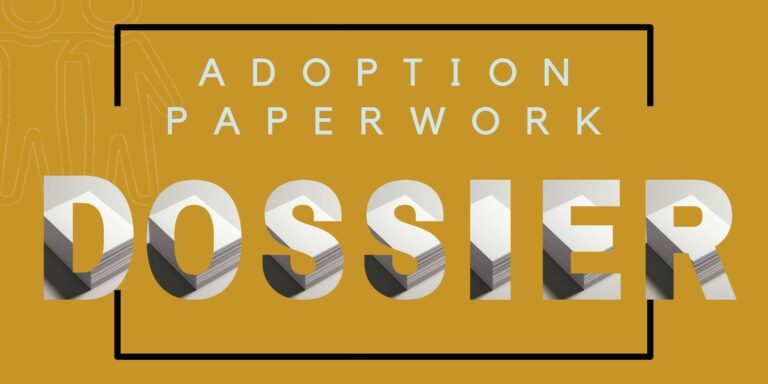Books About Foster Parenting: Another Place at the Table

My Rating: 10 out of 10
Time to Read: 4-5 hours
Whom It’s Best For: Readers ready to be challenged by a compelling, heavy narrative.
Cheapest Place to Buy: Another Place at the Table–Thriftbooks (limited inventory)
Purchase It New: Another Place at the Table–Amazon
Sponsored Links. As an Amazon Associate, I earn from qualifying purchases. 💸
Kathy Harrison-who at the time of this book had fostered nearly 100 children–invites us to view her thoughts and experiences as she loves and cares for several foster children. Danny, Sara, Lucy, Karen, and others all find their way into our hearts as we read firsthand of the difficulties and abuse they endured, and the loving-kindness Kathy and her husband sought to extend.
There’s no doubt that many of us would consider becoming a foster parent a daunting prospect. Harrison’s storytelling substantiates that reality, but also draws a picture of the potential resilience and courage of foster parents and foster children alike.
Why I gave it my rating
The tone and content of this book is everything I hope for from an author. The way she transports the reader wholly into the intensity of tragic moments–and then describes the shift in her own thoughts and feelings as life continues on–is magnetic. In her words we recognize the actuality that even the most extreme feelings change, fade, and shift. It was truly gripping to read; finding it hard to breathe through the dismay of vivid language and accounts, and then moving on with her to face the next task, conversation, meal, or assignment.
Even though the book is heavy–even brutal at times–it is interesting, honest, and sincere. 10 out of 10 books have writing that is captivating, organization that makes sense, and stories or information that are life-changing. This book had all three.
How it has changed me
I am more exposed to the harshness of this world. Because these children described were true characters with actual histories and quotes that took my breath away at the sting; I ached for them and wished it was possible to erase what they had been put through. I was shocked by the brutality and depravity they had to face. This was one of only 2 books I have read in my life where I skipped to the end before reading the entire volume. By the time I was done with Chapter 5, I just had to see what she would say in the end. How would the story turn out? Was there a happy ending? Please any semblance of a happy ending? Because I was desperate.
I won’t spoil any of that information here, but I will say that I found at the end the foster mom who had been through it all still drawn to the work she contributed so much to. Her words in the last paragraph changed me most of all because I saw myself in them. This book shined a light for me on the reality that I am also a person capable of the heavy work, and doing good there.
P.S. Don’t worry I still went back and finished reading the entire volume. 😉

What I’m going to do — Take-Aways
I’m going to stop fretting about the perfect picture I had in my head for my life. The picture I entertained was of a life less stressful, more organized, and less exacting than the one I am leading now. I am wasting energy and confidence waiting for that supposed ideal and trying to align my life to somehow uncover it. I keep myself under so much stress while waiting for the day when the challenges are all finally resolved, as if I could say at that moment, “ah, see, Jess, you have done it.”
What is that? Have I really done my best work when life is subdued, all semblance of mess put away? Or could it be, perhaps, that we each do our best work when the days are hardest, when the problems are immense, and when we are required to be both fierce and wise, patient and persistent, unstoppable and kind?
I have a new picture of what my best life looks like now. It’s to march on unafraid. Tired, perhaps, but self-assured. It’s to stand shoulder to shoulder with Kathy Harrison in living a warrior’s life, shouldering the strain willingly while doing the most important work of all, that of a mother.
I am grateful to her example that gave me wisdom I otherwise would have missed.

A Practical Tip I’m Taking With Me
At one point in the book, the author mentions a game she uses in order to open up a conversation with her foster children. She began using the game frequently when she saw how effective it was after one of the children’s therapists used it. The game is called, “Best and Worst”.
To begin, the adult in the conversation describes their own best and worst moments from something that recently happened. Let’s take a look at her example from the book:
“‘It sure was lonely around here with you gone,’ I said to Lucy now. ‘That was the worst thing. The best thing was getting to go shopping for your birthday. We’re going to have the party tomorrow night.'”
Then the adult extends the invitation to the child to share his/her best and worst parts:
“‘What was the best thing about your visit with your mom?'”
You can see from the foster child’s reply how this method of conversation allowed her to share many of her genuine feelings:
“‘The first night,’ Lucy answered. ‘My mom had all her friends over, and she bought lobster and I got a claw all to myself. Lenny let me have a sip of his beer. It was really fun, but then the neighbors complained about the noise, and the cops came and made everybody go home.’
‘Was that the worst thing?’
Lucy seemed lost in thought for a minute.
‘No,’ Lucy replied. ‘The worst thing was when my mom and Lenny went out and I had to stay home. I know I’m old enough, but I get scared. When bad guys are on TV, I’m always afraid that they’ll come to my house.’
‘You know, Lucy, nine really isn’t old enough to stay alone, especially at night. Did your mom go out a lot?’
‘I guess. Mostly every night. And I got so sick of peanut butter. But that’s all we had. My mom spent all her money on my party, and then she couldn’t go shopping again till the food stamps came in.’
‘You never showed me what your mom got you for your birthday.’
‘It’s still in my bag. You wanna see?’
Lucy dragged her backpack from the top of her dresser. She pulled out two T-shirts. Both were black and clearly meant for a boy. One had a motorcycle on the front and the other, a deer. Neither looked new or even particularly clean. I really didn’t know what to say. I suppose I seem ridiculously sexist and old fashioned, but I have yet to meet a nine-year-old girl who doesn’t prefer pink and purple (preferably with glitter kittens) to boys’ black shirts.
‘Just once I thought she might get me something pretty,’ Lucy said wistfully. ‘Maybe something yellow.'” (Harrison, 2004, pp. 101-102)
In Summary
Doesn’t it just tug at your heart??! The whole book is this way, with a wide-open vulnerable look at the lives of Harrison’s family and these children. Though the time required to read the book as mentioned at the beginning of the post is around 4-5 hours, I found it best to break up the reading over several days. There is just so much emotion, tragedy, and triumph to process.
I can see multiple reasons why Kathy Harrison’s book is a best seller. Through descriptive words used to describe her unique, uncommon every day, we get an invigorating–and somewhat shocking–dunk into a life very unlike most of our own. This book has changed the way I approach challenges within my family. I will forever be more brave because of her.

Harrison, K. (2004). Another place at the table. Penguin.








Oh, hey there! So, I checked out the article you shared about foster parenting and the book “Another Place at the Table.” Foster parenting is such an important topic, and it’s great to see books that shed light on the experiences and challenges faced by foster parents. As for my personal experience, I haven’t been a foster parent myself, but I’ve known a few amazing individuals who have taken on this role, and let me tell you, it’s not an easy task. It requires a lot of love, patience, and strength. Now, as for my opinion, I think it’s crucial for society to support and appreciate foster parents because they play a vital role in providing stability and care for children in need. So, kudos to the author for tackling this topic and bringing awareness to the realities of foster parenting.
I so agree with you; I think if more people spent a bit more time considering the children in foster care and the families doing the difficult work to care for them, there would be more support offered. Perhaps more people would become respite providers to watch foster children for a short time while their caregivers take a break. Perhaps there would be more of a push for greater funding to support foster parents and programs. Perhaps there would even be more people willing to become foster parents themselves! This is one of those messy areas of life where it’s easy to simply turn your head, but being part of the solution is better.
Great article well worth the read. I am familiar with the “Best and Worst Game” some thing we have used many times. Books like this one can make a person really look within them selves and want to make changes in all aspects of their life. The fact that she has fostered over 100 kids is truly remarkable. Great read.
That’s neat that you have used the “Best and Worst Game” so often! I want to add many tools to my parenting tool belt like that one. There is so much we can learn.
Reading the book I felt many times over that the author is a remarkable person!